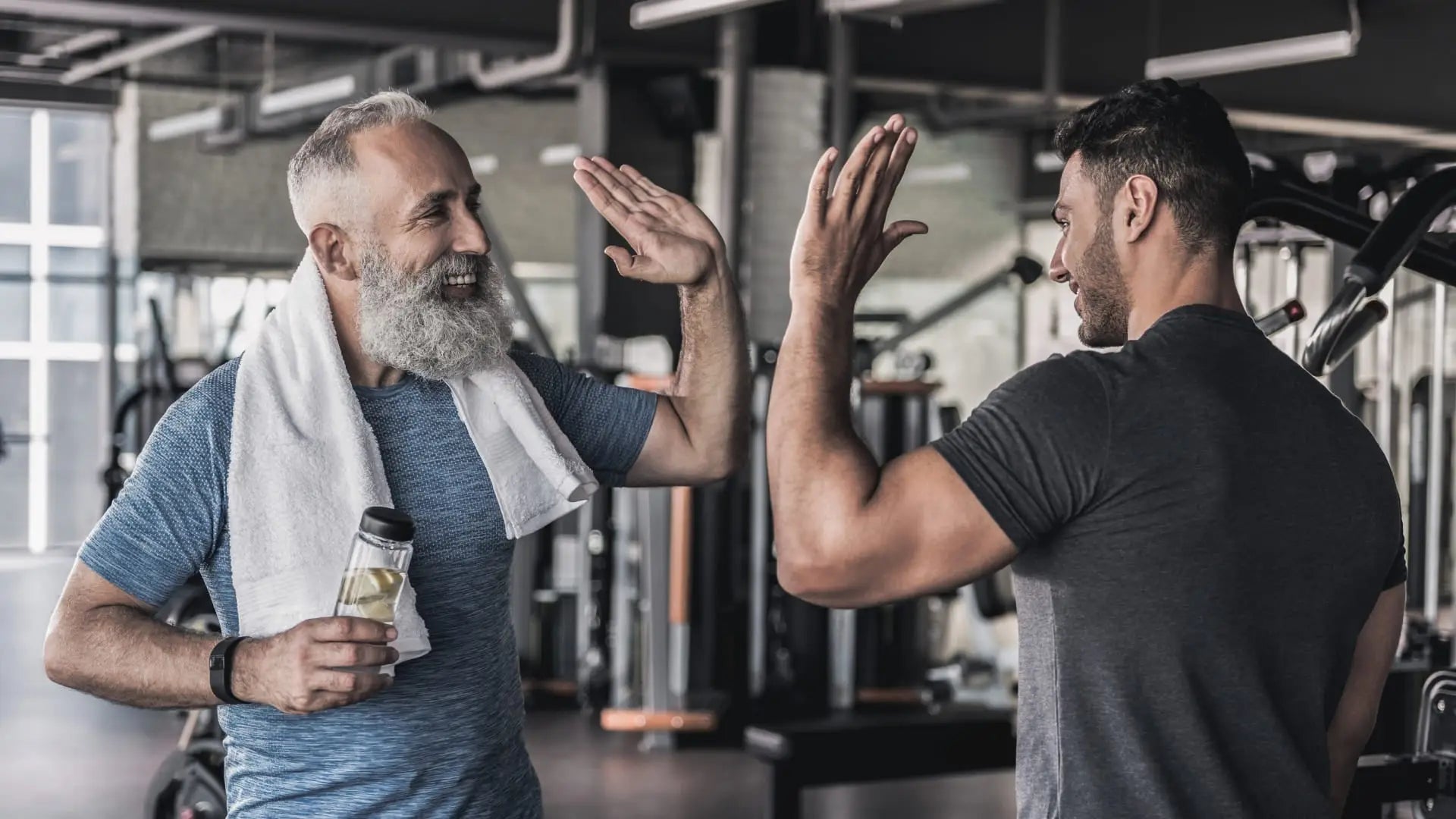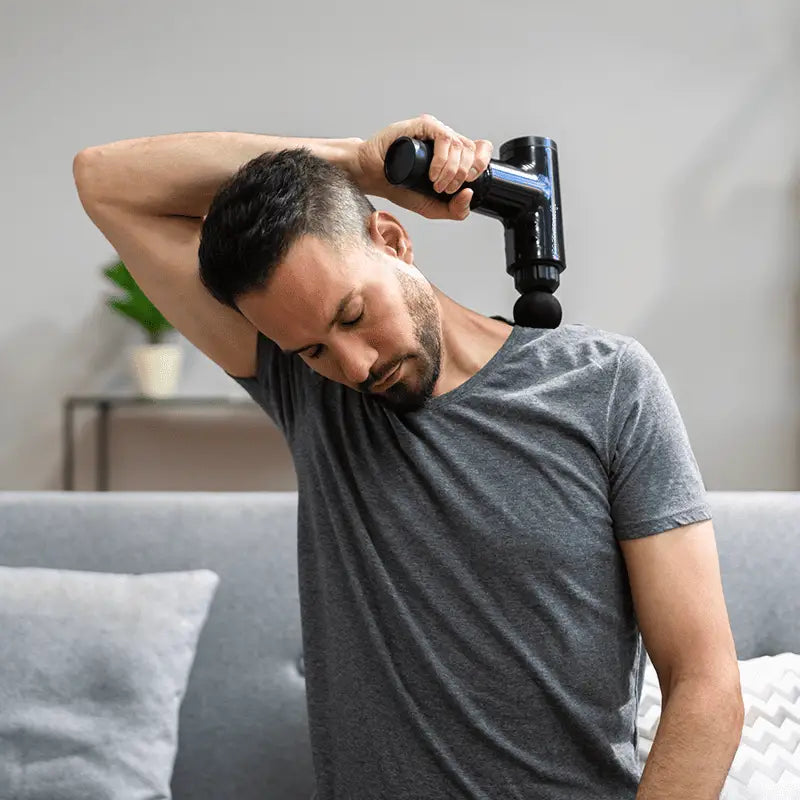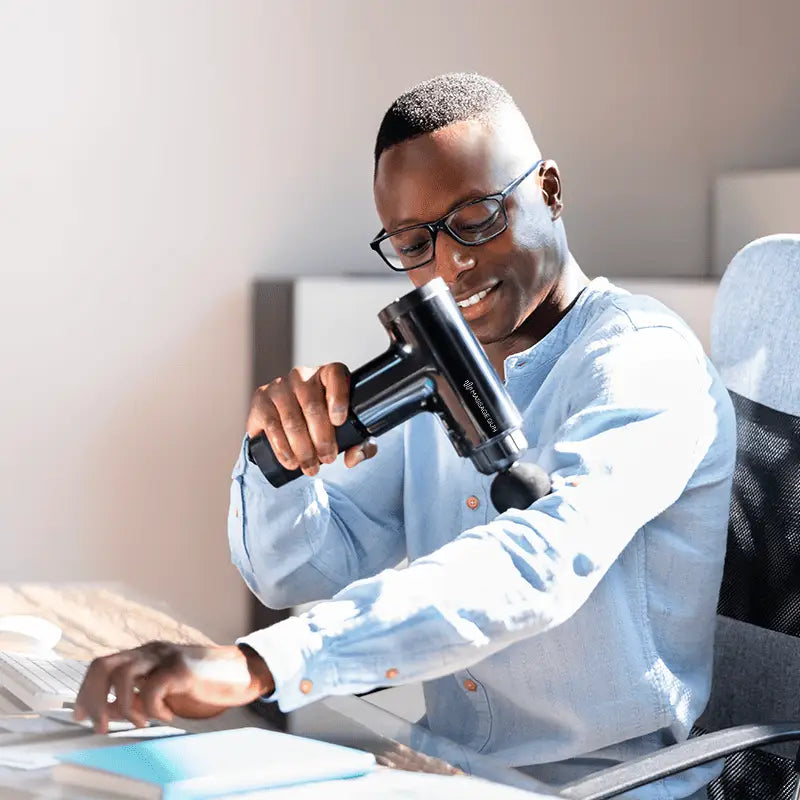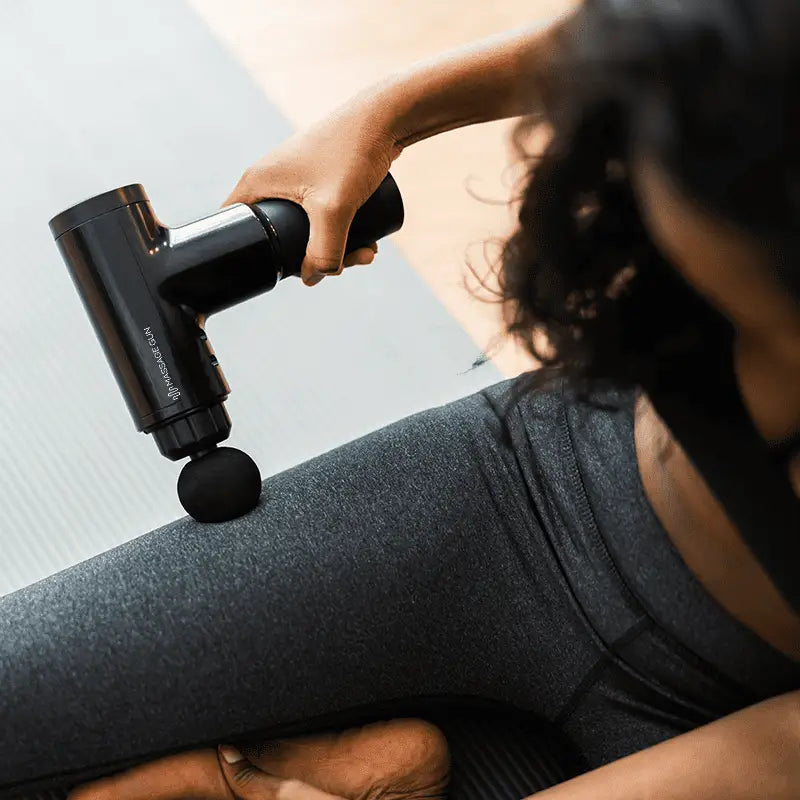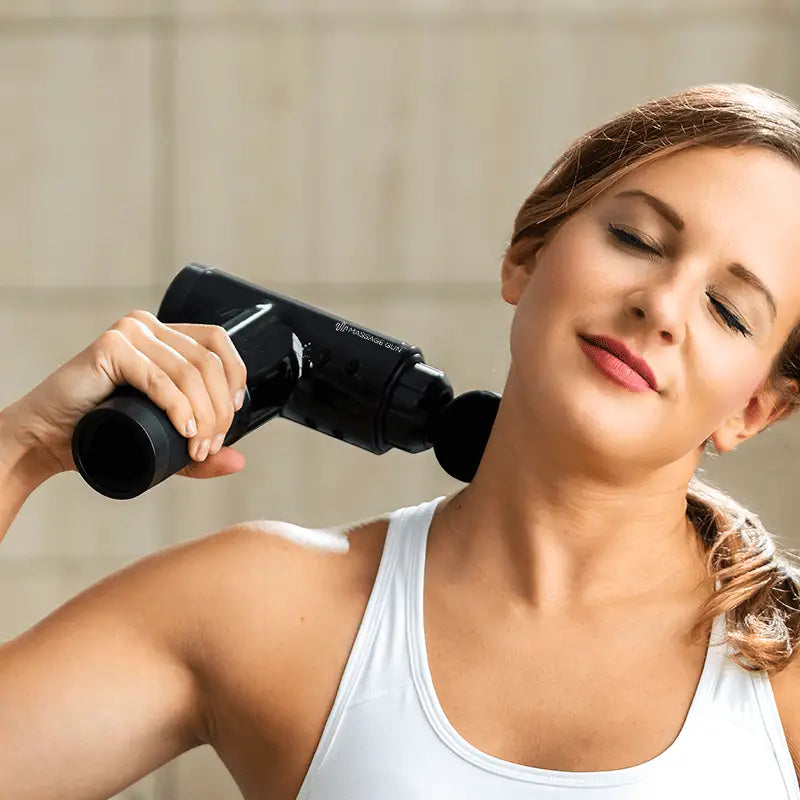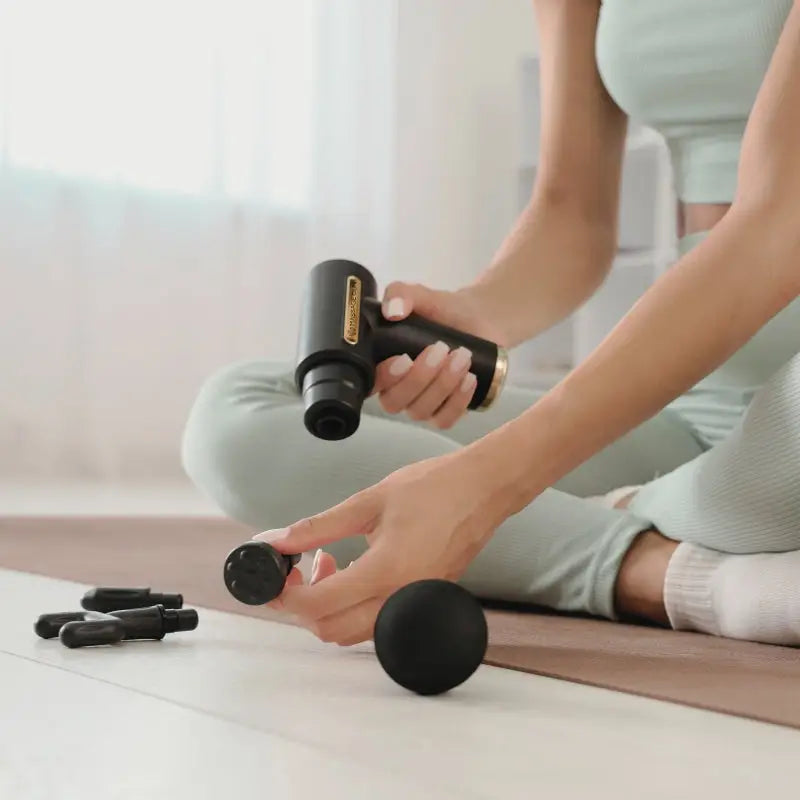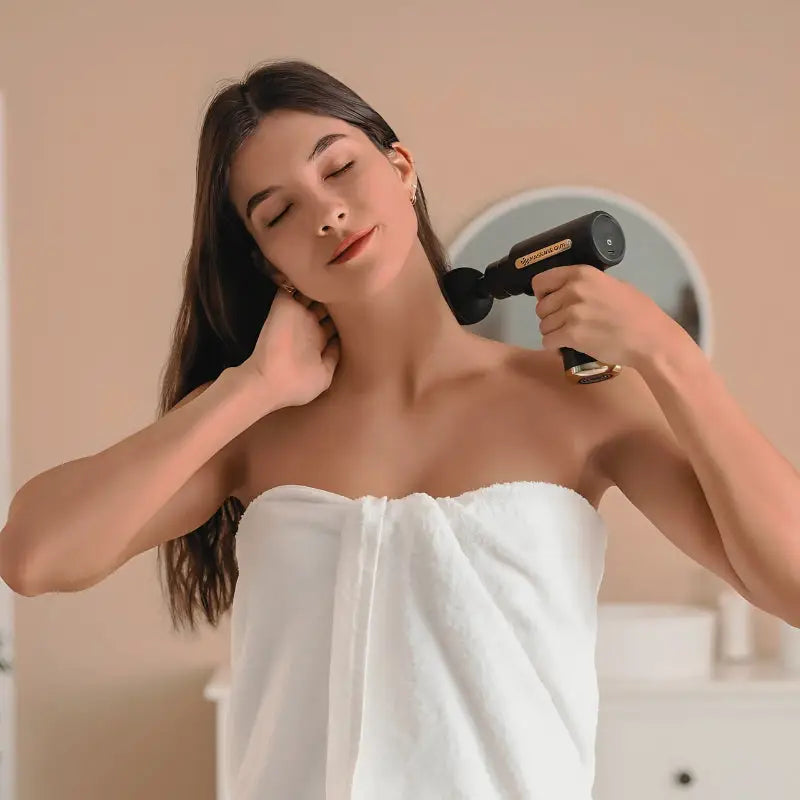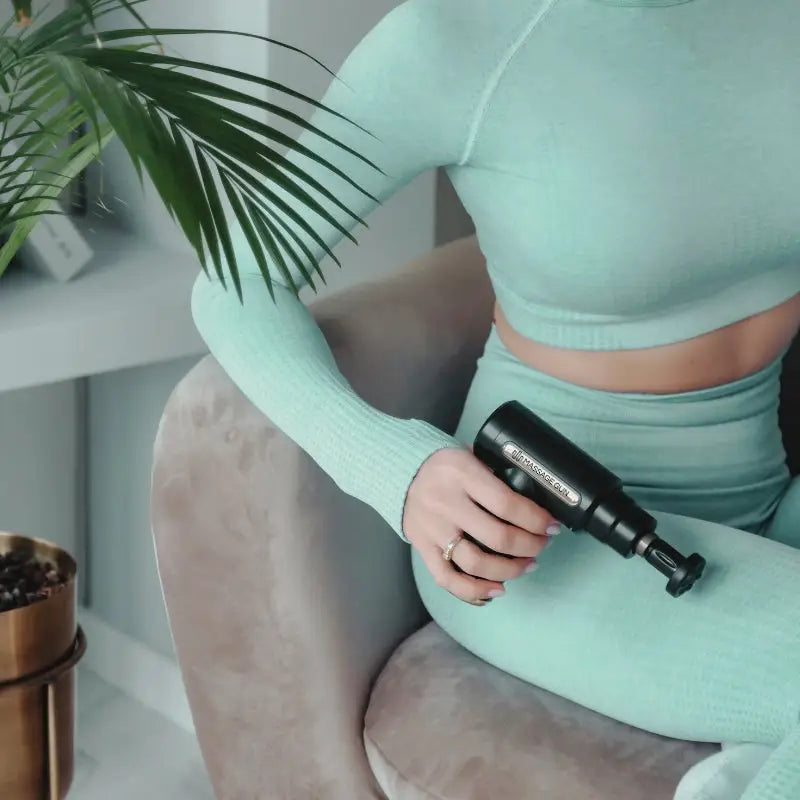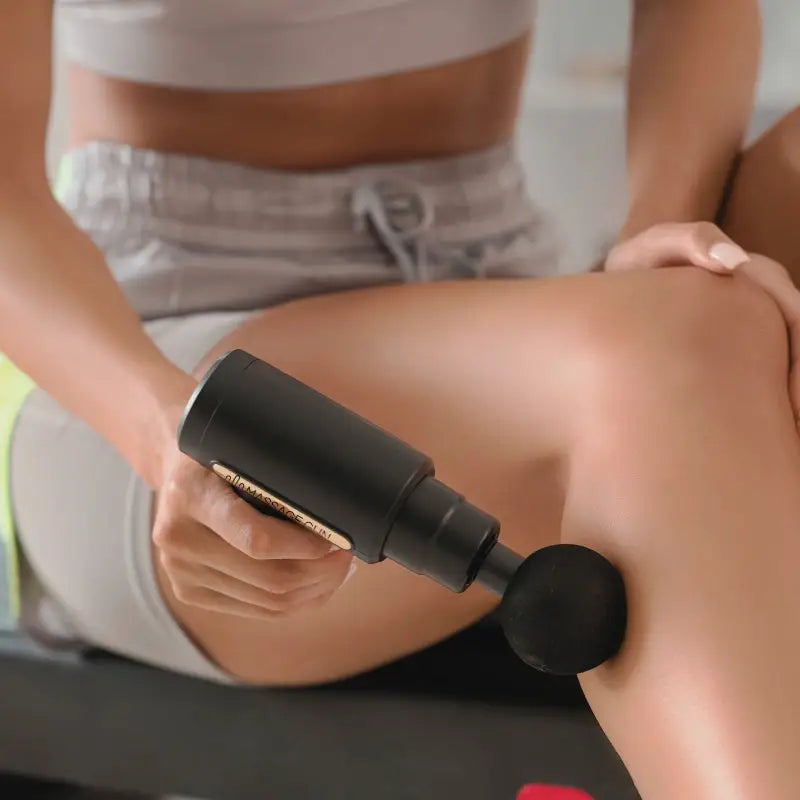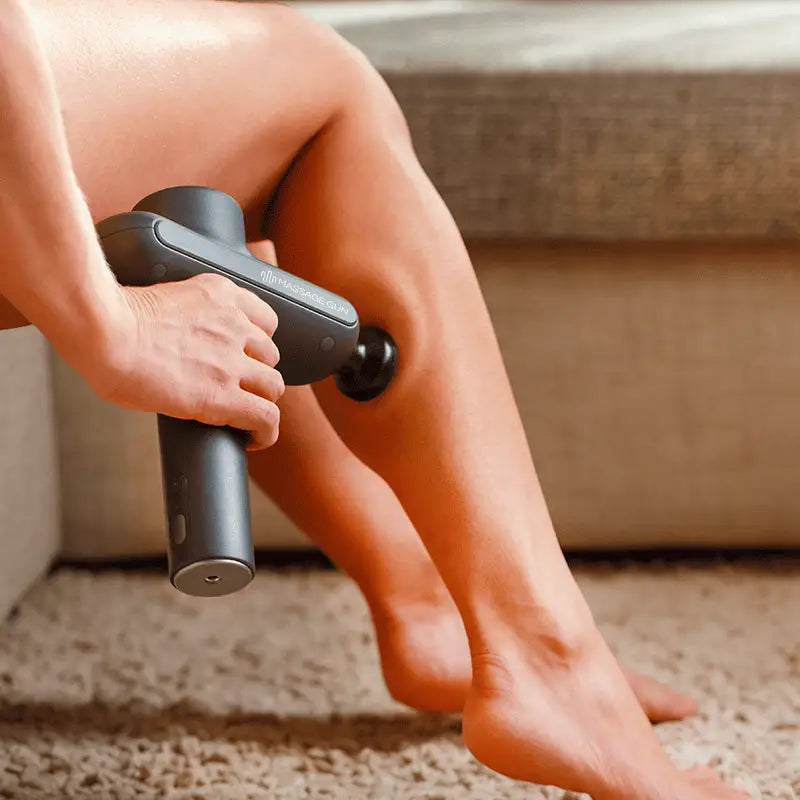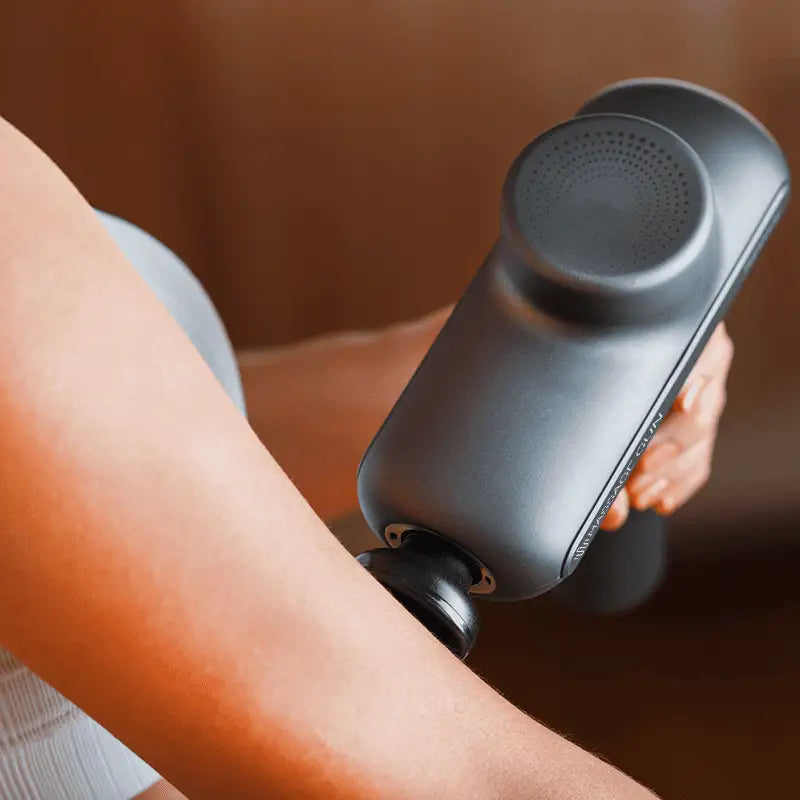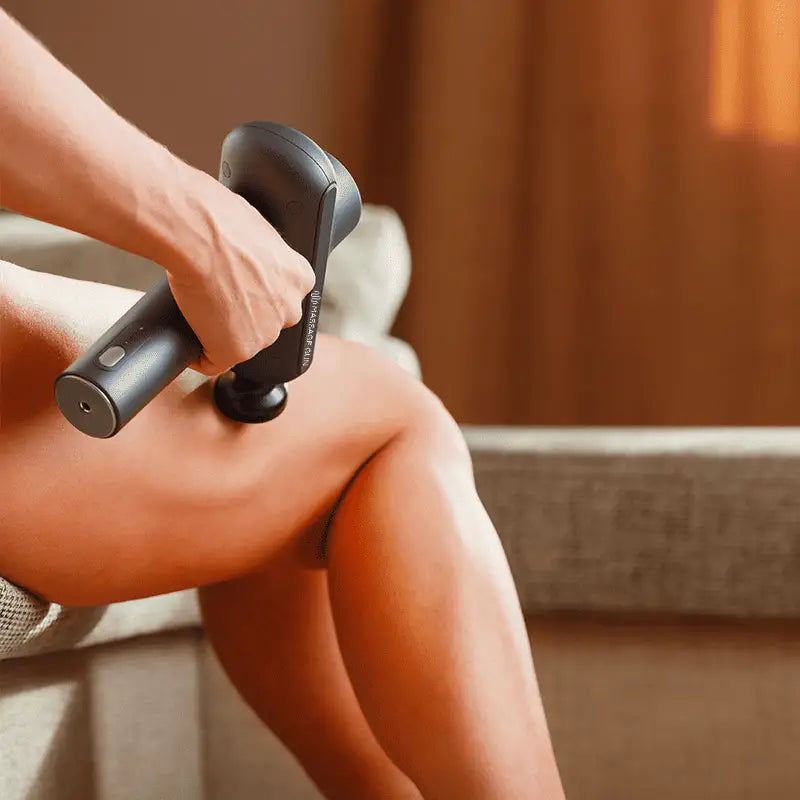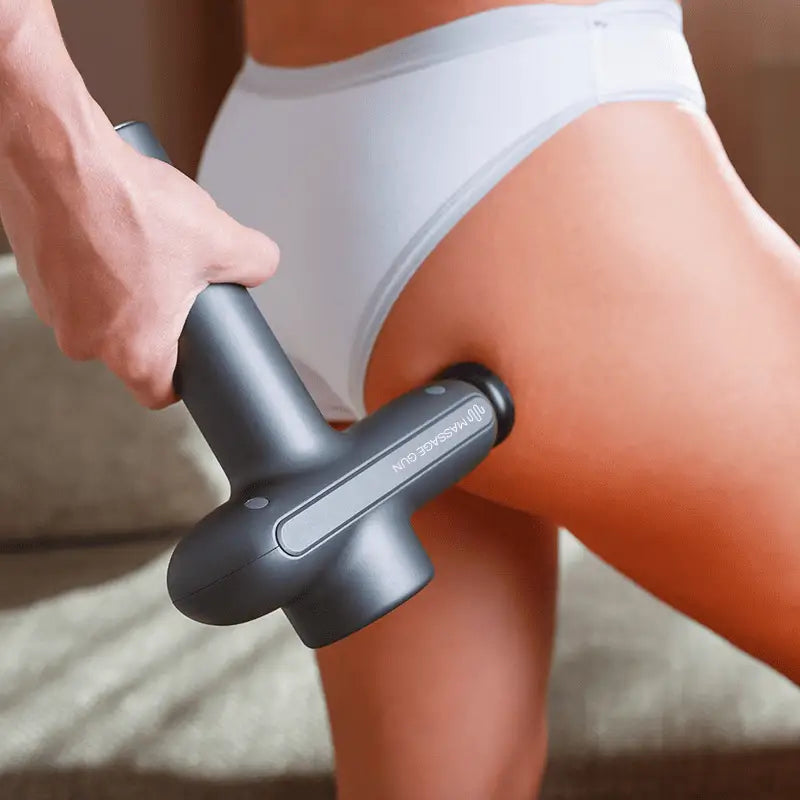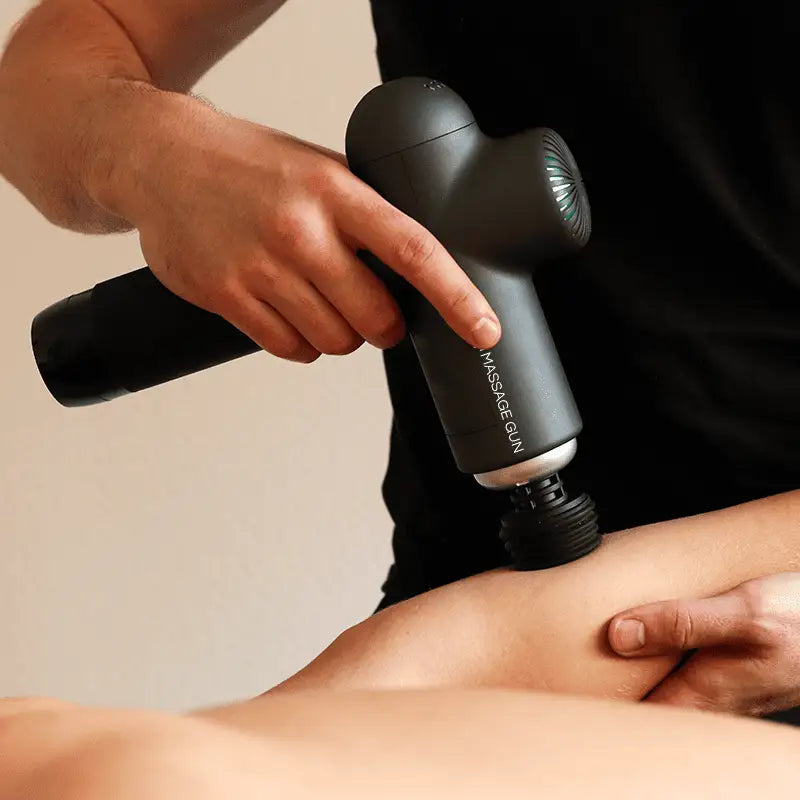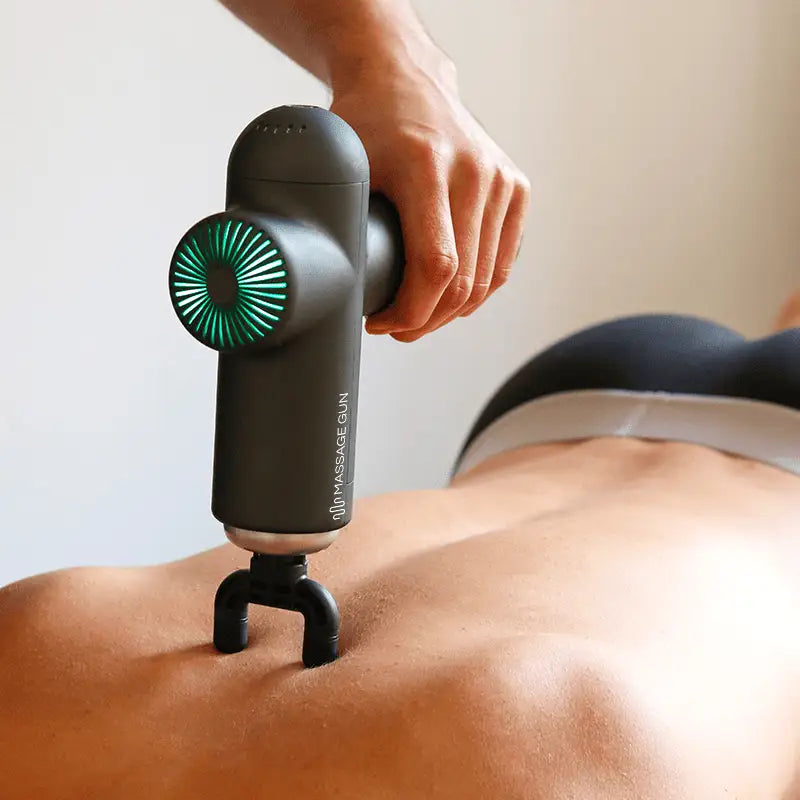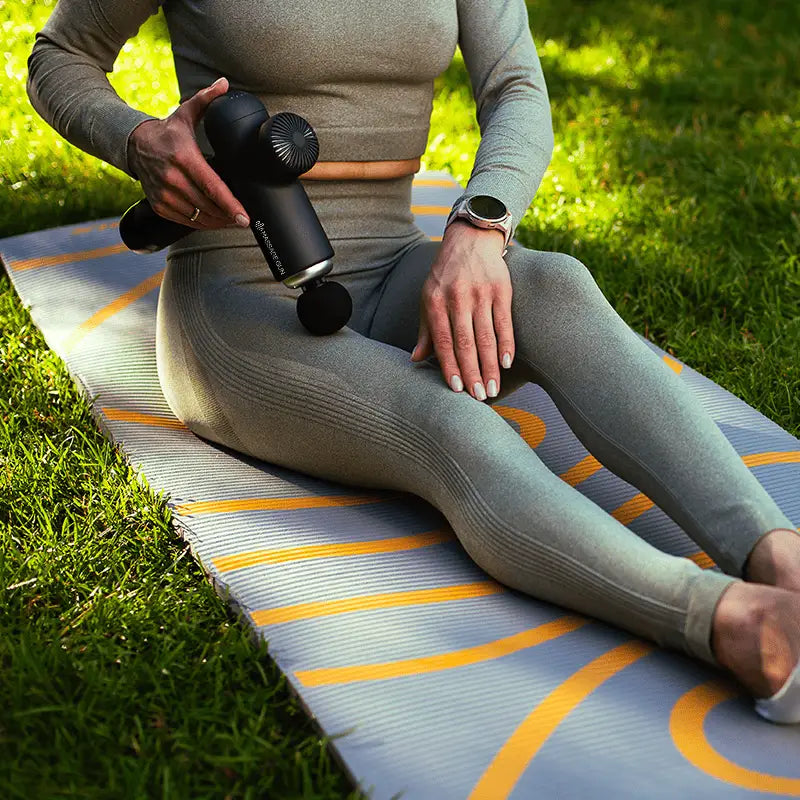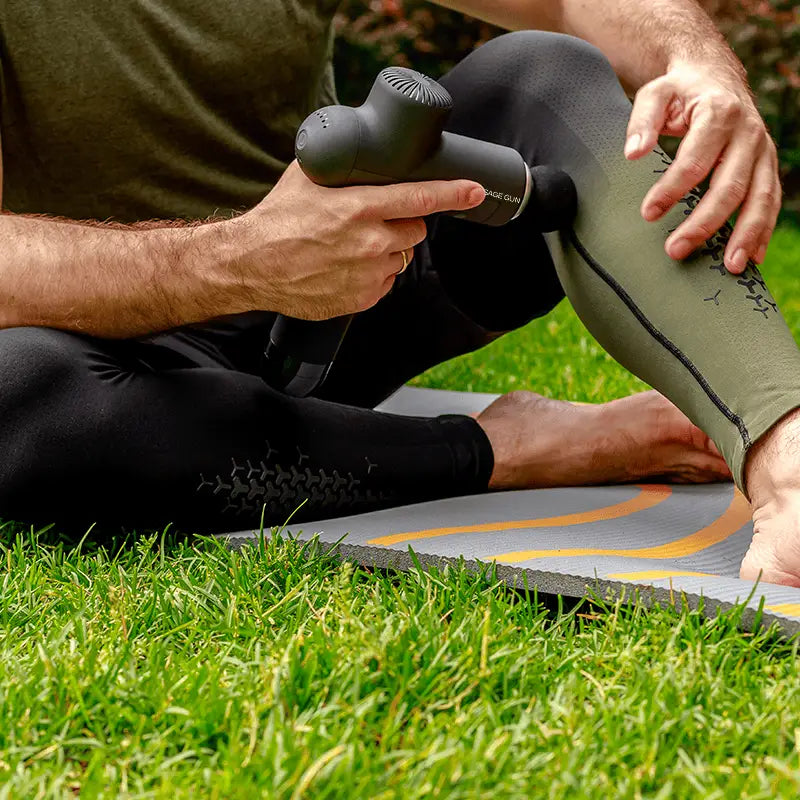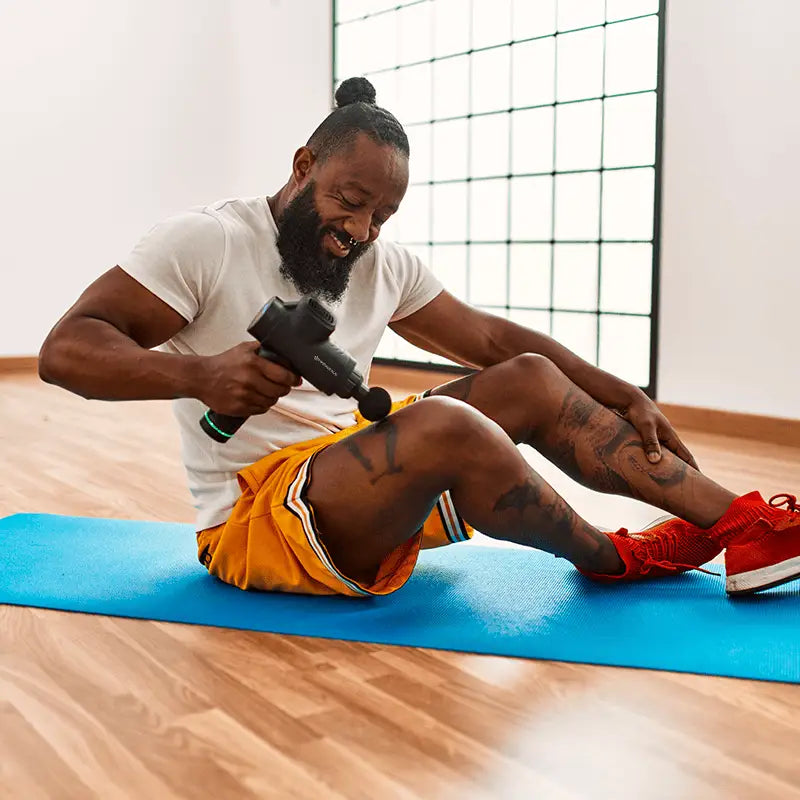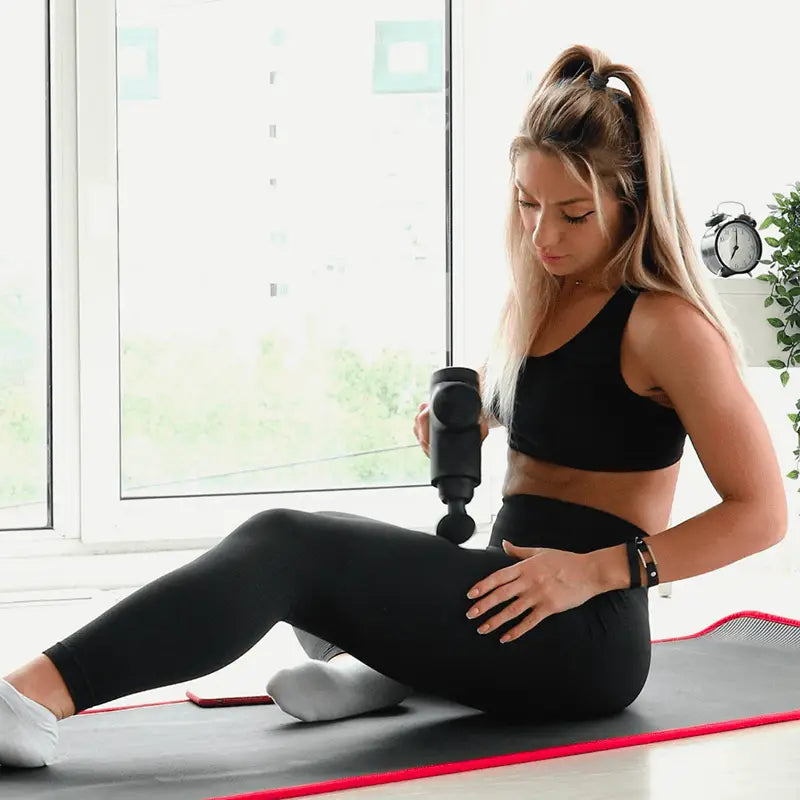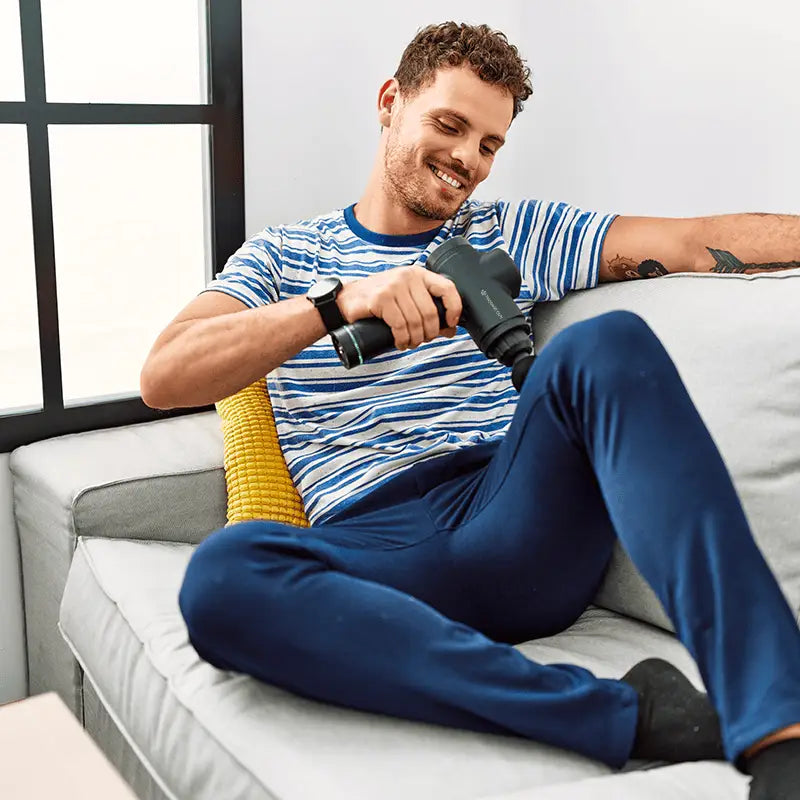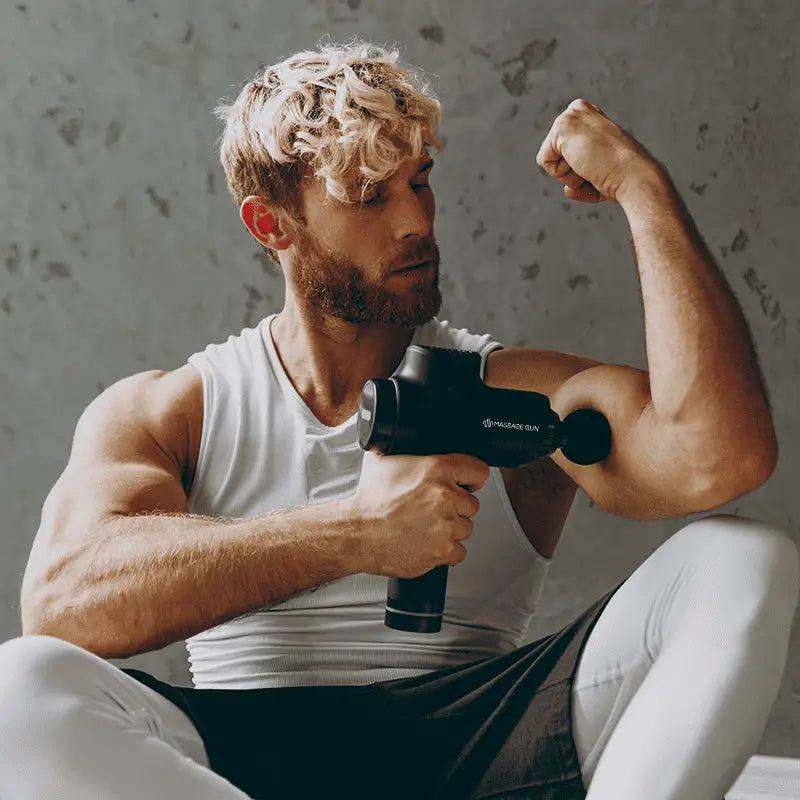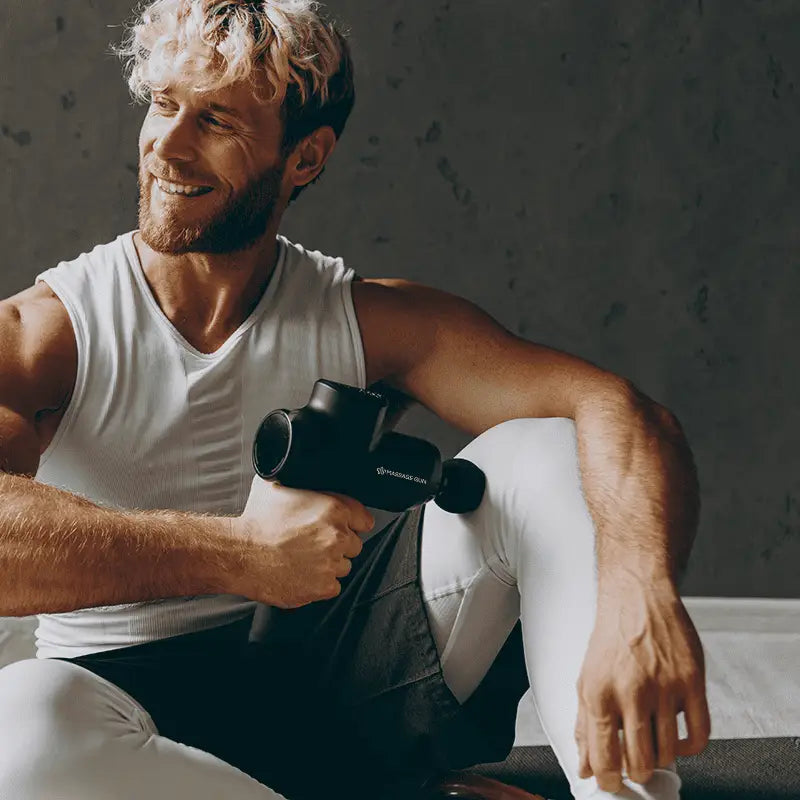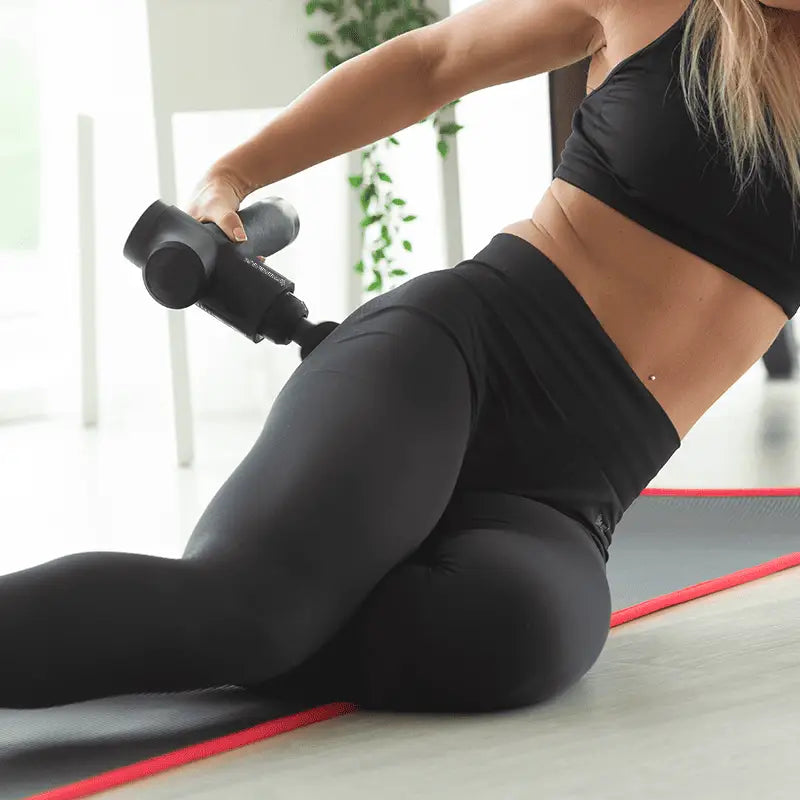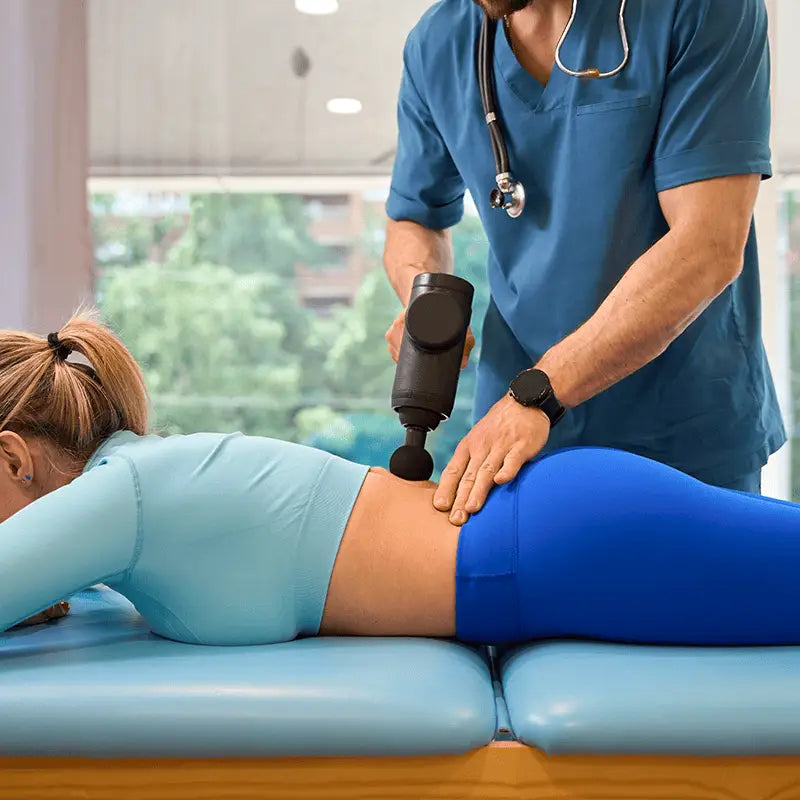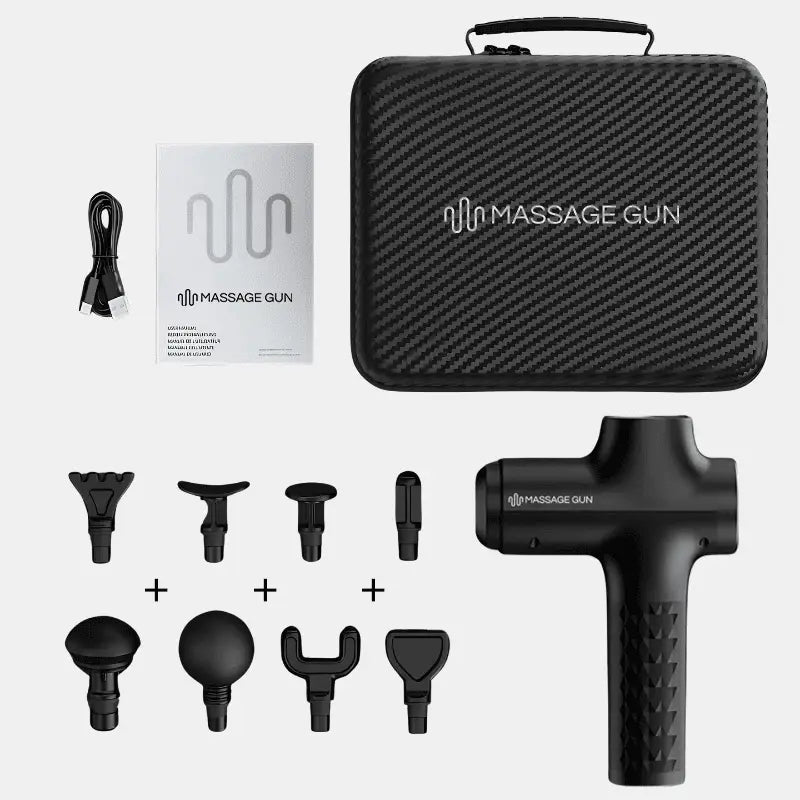A massage gun is a highly effective tool for relieving muscle tension, improving blood flow, and aiding in exercise recovery. Whether you experience pain from an intense workout or are looking for ways to relieve soreness, using a handheld percussion massager can be a game-changer.
Properly understanding where and how to use a massage gun on different parts of your body is essential to avoid potential damage and to fully enjoy the benefits of massage. This guide will cover the optimal muscle groups to target, the best techniques, and when to consult a physical therapist or professional before using the device.
Key areas to use a massage gun
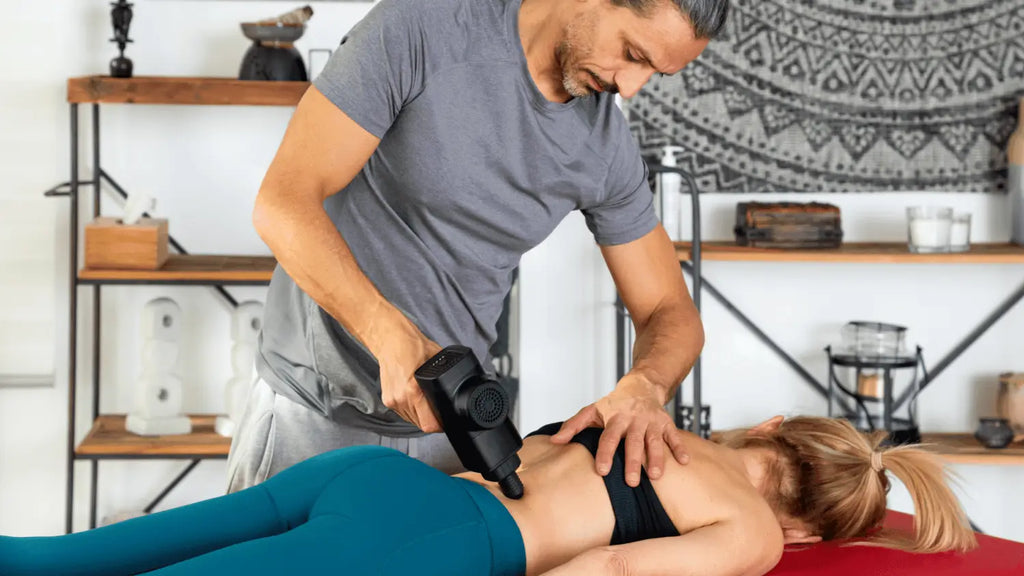
Different muscle groups benefit from percussive therapy in unique ways. Here’s how to effectively use a massage gun on various body parts to maximize muscle recovery and relieve soreness.
Neck and shoulders
The neck and shoulders tend to carry a lot of stress from daily activities like sitting at a desk or after a tough workout. A massage gun can relieve neck pain and muscle tension in this area. Start by applying moderate pressure to the sides of the neck, avoiding the spine and bones.
Use a soft massage head and begin with a low intensity to prevent discomfort. Move the device in slow, circular motions across the shoulders to ease tension and tight muscles. Gradually increase the speed as needed for deeper tissue relief.
Upper back
For the upper body, especially the upper back, a massage gun is a great way to release muscle knots that can form from exercise or poor posture. Target the trapezius muscles and use medium pressure to avoid hitting bones.
Moving the gun along the length of the muscle fibers helps to improve range of motion and enhance blood circulation. This area is prone to tension, so proper massage gun therapy can greatly reduce soreness and stiffness.
Lower back
The lower back requires careful handling when using a massage gun. Avoid pressing directly on the spine or bones and focus instead on the muscles around the area, such as the erector spinae.
This can help prevent injury and improve mobility. Use gentle, gliding motions and gradually increase intensity as your muscles start to relax. Vibration therapy in this area helps reduce muscle pain and promotes recovery after an intense fitness session.
Arms (biceps, triceps, forearms)
Using a massage gun on the biceps, triceps, and forearms can relieve tightness caused by strength training or repetitive movements. The benefits of massage in this area include reduced muscle soreness and enhanced blood flow.
Be sure to avoid the elbow joint and bones by sticking to the muscle tissue. The massage gun can help break up scar tissue and improve the range of motion in these muscles, making it an excellent tool for sports recovery.
Legs (quads, hamstrings, calves)
Your legs, particularly the quads, hamstrings, and calves, often become tight after activities like running or sports. A massage gun can help loosen these large muscle groups and prevent delayed onset muscle soreness (DOMS).
Use a percussive massage treatment to target specific sore spots, such as the hamstrings and calf muscles, focusing on deep tissue relief. This helps break up lactic acid and reduces inflammation after a workout, ensuring faster muscle recovery. Start at a low speed and increase gradually as your muscles adjust.
Hips and glutes
The hips and glutes are essential for supporting movement, and they can carry a lot of muscle tension after long periods of sitting or intense workout sessions. A massage gun can improve mobility and relieve muscle pain in this area by focusing on the gluteal muscles and hip flexors.
Using a foam roller alongside the massage gun can further enhance recovery by targeting myofascial release and breaking down tight connective tissue. Start with gentle, circular motions and apply moderate pressure to relax the muscles effectively.
When not to use a massage gun?
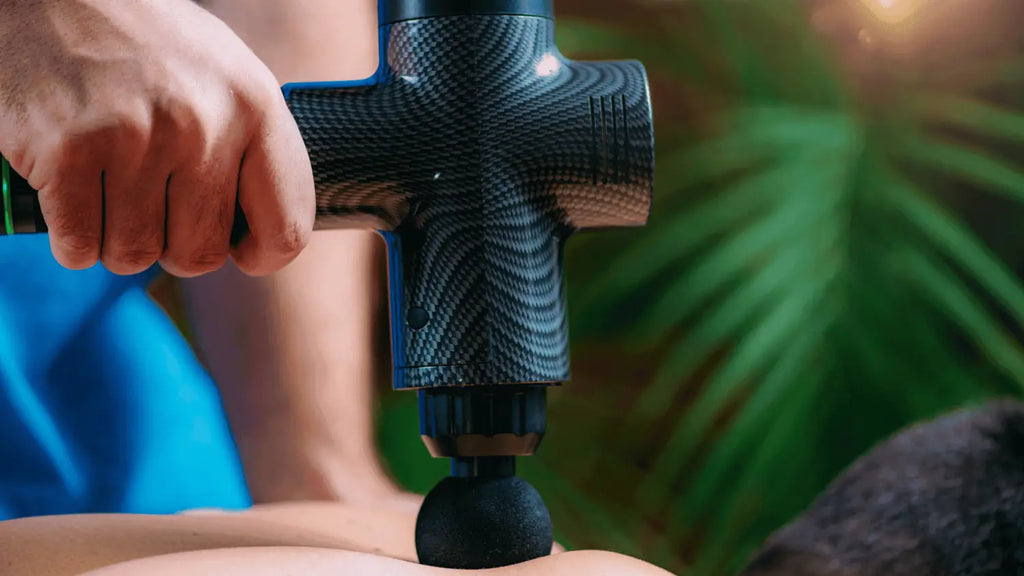
While massage guns are highly effective, there are situations and areas where they should not be used. This section provides guidance on avoiding injury or further damage.
Avoid using on bones and joints
A massage gun should never be used directly on bones or joints like the elbow, knee, or spine. Applying pressure to these areas can cause significant damage and bruising. Instead, focus on muscle tissue around these sensitive areas. If you feel the gun hitting a bone, adjust the position immediately to prevent discomfort.
Do not use on injuries or inflammation
Never use a massage gun on areas that are already injured or inflamed. The intense percussive therapy can worsen pain and lead to further tissue damage. If you have a soft tissue injury, it’s best to consult a professional like a board certified massage therapist or physical therapist to receive proper treatment and avoid long-term issues.
General health contraindications
Individuals with certain health conditions, such as deep vein thrombosis or fractures, should avoid using a massage gun without medical clearance. Always consult a professional if you're unsure whether percussive massage is safe for you. Additionally, individuals with chronic pain conditions should be cautious and follow specific guidelines for safe use.
Massage gun settings and best practices
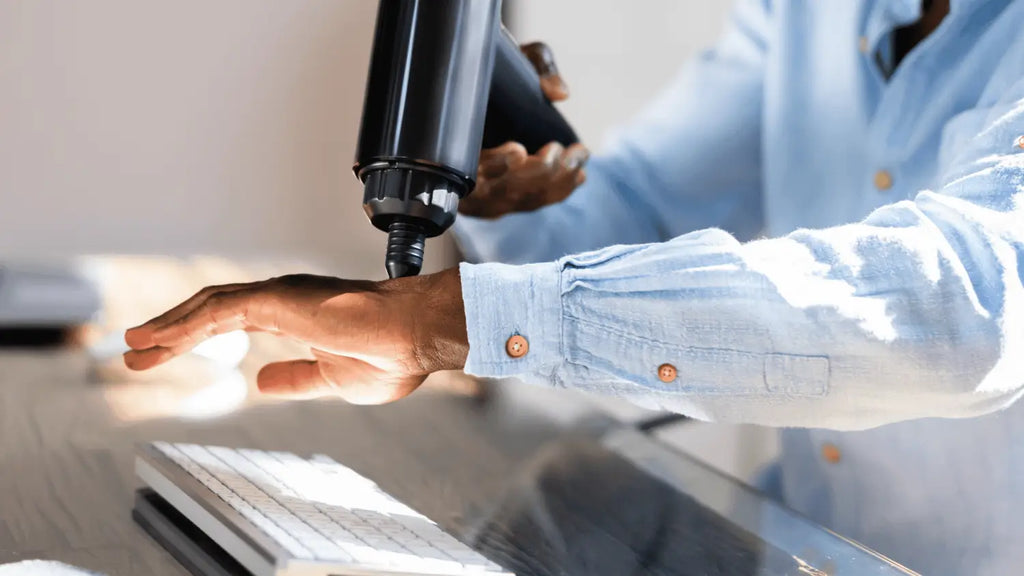
Understanding how to use your massage gun correctly is key to ensuring safe and effective therapy. Choosing the right setting, pressure, and duration can make a significant difference in your recovery experience.
Choosing the right speed
Most massage guns come with adjustable speed settings, allowing you to customize the intensity of your treatment. Use lower speeds for warm-ups and higher speeds for deeper tissue relief during recovery. Begin at a slow setting and gradually increase the speed based on your muscle’s response. This helps prevent injury and allows the massage gun to work effectively without causing unnecessary discomfort.
Duration for each area
To avoid overstimulation, limit your massage gun session to about 30 seconds to 2 minutes per muscle group. Overusing the device can lead to soreness and reduce its effectiveness. Pay attention to how your body feels and adjust accordingly. For post-workout recovery, using the massage gun for short bursts can help break down lactic acid and improve blood circulation, reducing overall muscle pain.
Proper technique for soreness and recovery
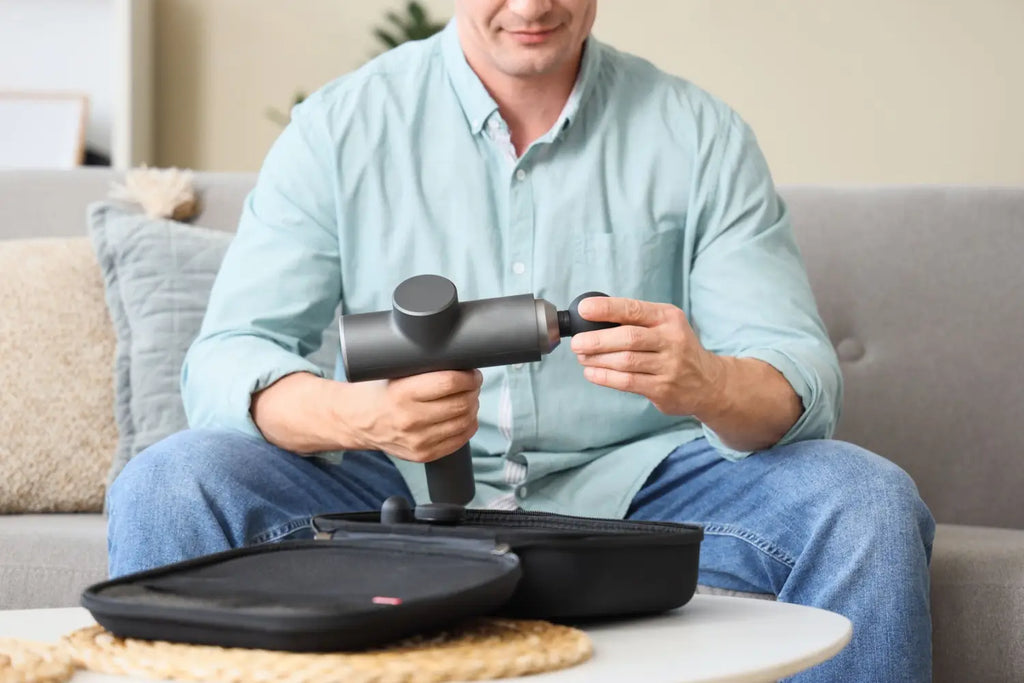
The proper way to use a massage gun involves smooth, gliding motions along the muscle fibers. Avoid staying on one spot for too long and do not press hard on sensitive areas.
Instead, allow the device to move naturally along the muscle tissue, applying moderate pressure to relieve tension and improve range of motion. For more effective results, combine percussive therapy with stretching exercises to maintain muscle recovery.
Combining massage guns with other recovery tools
For a more comprehensive recovery experience, consider pairing your massage gun with other tools like foam rollers and stretching exercises. This integrated approach helps improve muscle recovery and promotes better flexibility.
Using foam rollers and massage guns together
Using a foam roller before or after your massage gun session can enhance the effects of myofascial release and improve blood circulation. The foam roller loosens muscle fibers, allowing the massage gun to penetrate deeper into the tissue. This combination is particularly effective for treating sore legs and larger muscle groups like the quads and hamstrings.
Integrating stretching with massage gun use
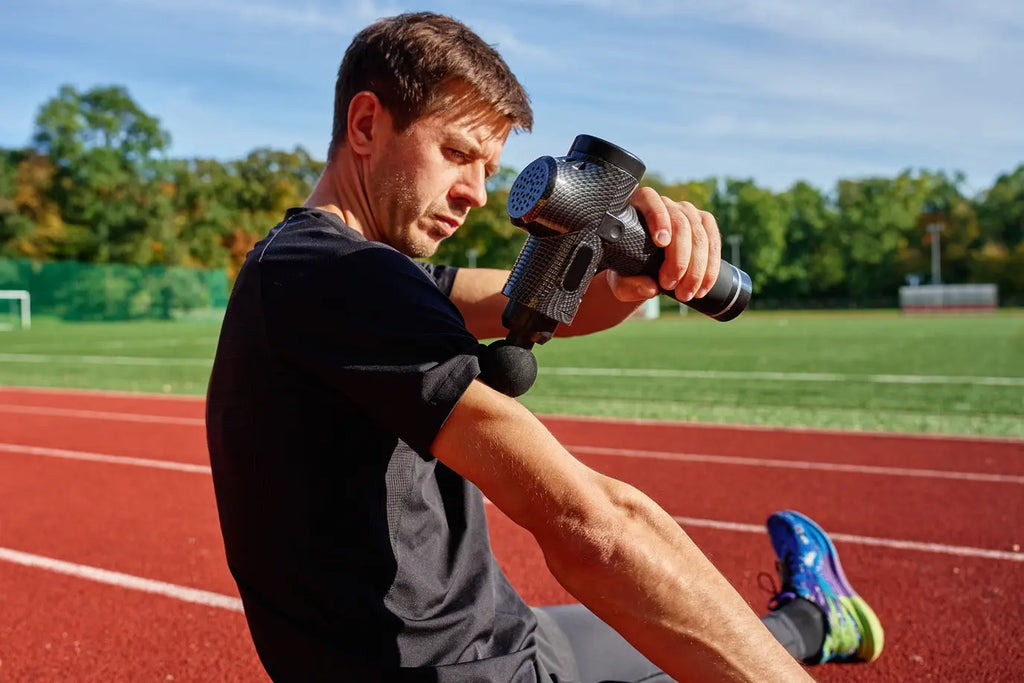
Stretching is another great way to complement massage gun therapy. After using the massage gun to relieve tightness, gentle stretching helps maintain range of motion and further reduces muscle tension. This technique is highly recommended by sports physical therapists for improving flexibility and promoting recovery after a challenging workout.
Frequently asked questions
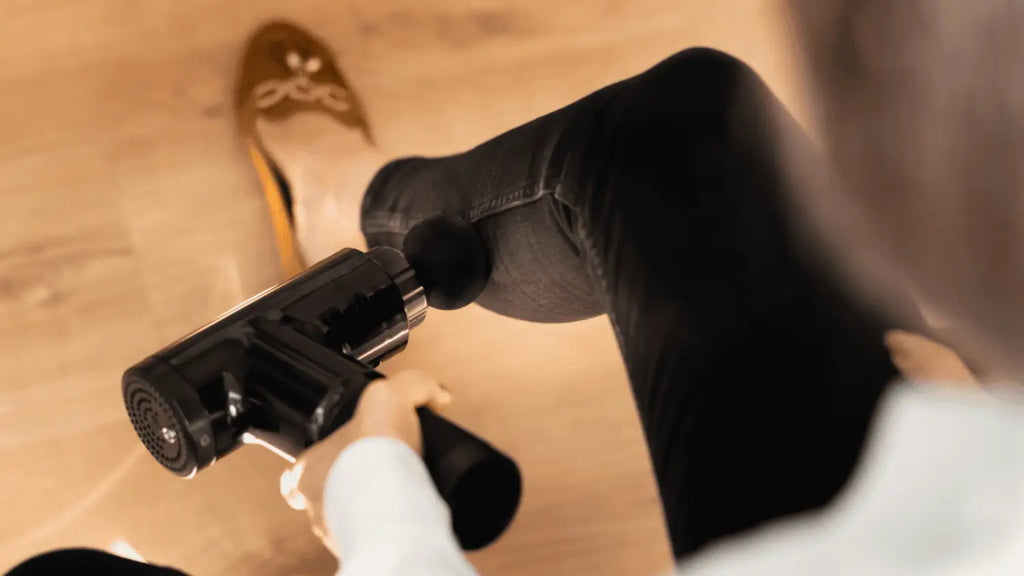
1. Where should I use a massage gun for muscle recovery?
A massage gun is an effective handheld device for muscle recovery, particularly when applied to major muscle groups. The quads, hamstrings, calves, glutes, shoulders, and back are prime areas for percussive therapy, as they contain large muscle fibers that respond well to deep tissue stimulation.
This helps increase blood flow, reduce lactic acid buildup, and improve range of motion after an intense workout. Using a percussion massage gun on these areas enhances exercise recovery by minimizing soreness, stiffness, and muscle tension.
For best results, start with a low intensity setting and gradually increase speed while paying attention to how your body reacts. Applying moderate pressure for 1-2 minutes per muscle group post-workout helps relieve muscle pain and prevent delayed onset muscle soreness (DOMS).
2. Can I use a massage gun on my neck?
Yes, but pay attention to safety. The neck is a sensitive area, and improper use of a massage gun can lead to injury. Avoid direct pressure on the front of the neck and spine to prevent damage to blood vessels and joints. Instead, target the trapezius muscles and upper shoulders, which often hold tension from stress, poor posture, or sports activities.
A physical therapist or board-certified expert would recommend using a low setting and applying gentle vibration therapy to prevent bruising or discomfort. If you experience chronic pain in the neck area, it’s best to consult a professional before using a massage gun on your neck.
3. Is it safe to use a massage gun on my lower back?
A massage gun can help relieve lower back pain, but it's crucial to avoid the spine and instead focus on the surrounding muscle tissue. The erector spinae muscles are the best target area for percussive massage treatment, helping to reduce inflammation and improve mobility.
Use a soft massage head and apply gradual pressure, ensuring you do not cause bruising or excess strain. Foam rolling can also be a good alternative therapy for spinal tension.
4. Can I use a massage gun on my feet?
Absolutely! The feet endure constant pressure throughout the day, especially for runners, athletes, or people standing for long hours. Using a massage gun on the arches, heels, and balls of the feet promotes blood circulation and alleviates muscle knots, foot fatigue, and plantar fasciitis.
To properly relieve pain, choose a specific massage head designed for smaller areas, and apply moderate pressure while keeping sessions under 2 minutes per foot. Massage guns guide the recovery process by improving connective tissue health in the lower body.
5. Is it okay to use a massage gun on my arms?
Yes! The biceps, triceps, and forearms are excellent areas for massage gun therapy, especially if you engage in strength training, sports, or repetitive motion exercises. Percussion massage helps prevent tightness, improve flexibility, and enhance muscle performance.
A certified sports physical therapist would suggest using a low setting first, then gradually increasing the intensity for maximum relief. Daily use of a massage gun on your arms can help relieve soreness and aid post-exercise recovery.
6. Where should I avoid using a massage gun?
It is critical to avoid using a massage gun on:
- Bones, joints, and the spine (to prevent damage or injury)
- The front of the neck (blood vessels and nerves are highly sensitive)
- Inflamed or bruised areas (risk of worsening the condition)
- Injured muscles (delayed healing due to excess pressure)
To ensure proper usage, always consult a professional before using a massage gun on sensitive areas.
7. Can a massage gun be used on my head for headaches?
No, massage guns should not be used on the skull. The bones in the head are too sensitive for percussive therapy, which can cause discomfort and potential harm. Instead, for headache relief, target the base of the skull (suboccipital muscles) and the upper neck.
Vibration therapy in these areas may help reduce tension headaches by improving blood circulation and muscle relaxation. If you suffer from chronic headaches, it’s best to consult a professional for treatment options.
8. Can I use a massage gun on my stomach?
Generally, no. The abdominal area contains vital organs that are not protected by thick muscle tissue. Percussive therapy in this region can be too intense, leading to discomfort or internal damage.
However, light massage on the obliques or lower abs can be used for muscle tension relief after sports or exercise. Always use a soft massage head and apply gentle pressure when working on the stomach area.
9. Should I use a massage gun before or after a workout?
Both! Using a massage gun before a workout helps warm up muscles, increase blood flow, and improve range of motion, reducing the risk of injury. Applying it post-workout minimizes lactic acid buildup, speeds up muscle recovery, and prevents stiffness.
A systematic review in the International Journal of Sports Medicine found that percussive therapy significantly improves muscle performance and reduces inflammation. A foam roller can also complement percussive massage treatment for better post-exercise recovery.
10. How long should I use a massage gun on each muscle group?
For optimal massage gun benefits, follow these guidelines:
- Pre-workout: 15-30 seconds per muscle group to increase blood flow
- Post-workout: 1-2 minutes per muscle group to relieve soreness and prevent stiffness
- Daily use: Keep sessions under 10 minutes per session to avoid muscle fatigue or bruising
Using a massage gun every day is safe as long as proper technique and settings are applied. If you feel pain or discomfort, reduce intensity or consult a physical therapist.


